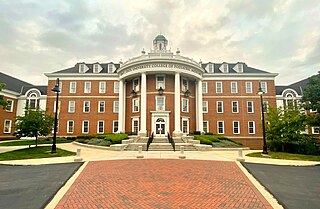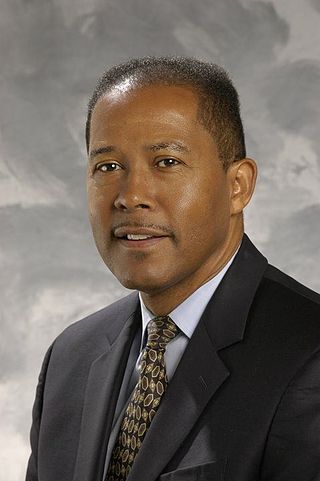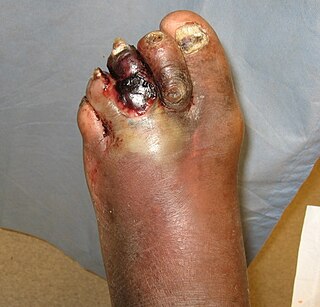
Amputation is the removal of a limb by trauma, medical illness, or surgery. As a surgical measure, it is used to control pain or a disease process in the affected limb, such as malignancy or gangrene. In some cases, it is carried out on individuals as a preventive surgery for such problems. A special case is that of congenital amputation, a congenital disorder, where fetal limbs have been cut off by constrictive bands. In some countries, judicial amputation is currently used to punish people who commit crimes. Amputation has also been used as a tactic in war and acts of terrorism; it may also occur as a war injury. In some cultures and religions, minor amputations or mutilations are considered a ritual accomplishment. When done by a person, the person executing the amputation is an amputator. The oldest evidence of this practice comes from a skeleton found buried in Liang Tebo cave, East Kalimantan, Indonesian Borneo dating back to at least 31,000 years ago, where it was done when the amputee was a young child.

Gangrene is a type of tissue death caused by a lack of blood supply. Symptoms may include a change in skin color to red or black, numbness, swelling, pain, skin breakdown, and coolness. The feet and hands are most commonly affected. If the gangrene is caused by an infectious agent, it may present with a fever or sepsis.

A podiatrist is a medical professional devoted to the treatment of disorders of the foot, ankle, and related structures of the leg. The term originated in North America but has now become the accepted term in the English-speaking world for all practitioners of podiatric medicine. The word chiropodist was previously used in the United States, but it is now regarded as antiquated.

Peripheral artery disease (PAD) is a vascular disorder that causes abnormal narrowing of arteries other than those that supply the heart or brain. PAD can happen in any blood vessel, but it is more common in the legs than the arms.

Podiatry, or podiatric medicine and surgery, is a branch of medicine devoted to the study, diagnosis, and treatment of disorders of the foot, ankle and lower limb. The healthcare professional is known as a podiatrist. The US podiatric medical school curriculum includes lower extremity anatomy, general human anatomy, physiology, general medicine, physical assessment, biochemistry, neurobiology, pathophysiology, genetics and embryology, microbiology, histology, pharmacology, women's health, physical rehabilitation, sports medicine, research, ethics and jurisprudence, biomechanics, general principles of orthopedic surgery, plastic surgery, and foot and ankle surgery.

The New York College of Podiatric Medicine (NYCPM) is a private podiatric medical college in Manhattan, New York. It is the oldest and second largest podiatric medical school in the United States.

Neuropathic arthropathy, also known as Charcot joint after the first to describe it, Jean-Martin Charcot, refers to progressive degeneration of a weight-bearing joint, a process marked by bony destruction, bone resorption, and eventual deformity due to loss of sensation. Onset is usually insidious.
Podiatric Medical School is the term used to designate the institutions which educate students and train them to be podiatrists, which diagnose and treat conditions affecting the foot, ankle, and related structures of the leg. In the United States, only schools which are accredited by the Council on Podiatric Medical Education (CPME) may earn the status of being a Podiatric Medical School. The Doctor of Podiatric Medicine degree is commonly abbreviated D.P.M. degree. The D.P.M. degree is a prerequisite for an individual to be accepted into a CPME accredited residency. The preparatory education of most podiatric physicians — similar to the paths of traditional physicians — includes four years of undergraduate work, followed by four years in an accredited podiatric medical school, followed by a three- or four-year hospital-based podiatry residency. Optional one- to two-year fellowship in foot and ankle reconstruction, surgical limb salvage, sports medicine, plastic surgery, pediatric foot and ankle surgery, and wound care is also available.

Kent State University College of Podiatric Medicine (KSUCPM), is the graduate podiatric medical school of Kent State University (KSU). As of 2022, it is the only fully public podiatry medical school in the U.S. The college is located in Independence, Ohio, south of Cleveland, approximately 30 miles (48 km) from the main KSU campus in Kent. Established in 1916, the college, formerly the Ohio College of Podiatric Medicine, was among the first in the nation to offer a program in podiatric medicine and surgery. The 122,000-square-foot (11,300 m2) facility operates as a regional KSU facility in podiatric medical education.

A removable shoe insert, otherwise known as a foot orthosis, insole or inner sole, accomplishes many purposes, including daily wear comfort, height enhancement, plantar fasciitis treatment, arch support, foot and joint pain relief from arthritis, overuse, injuries, leg length discrepancy, and other causes such as orthopedic correction and athletic performance.
The American Podiatric Medical Association (APMA) is a professional medical organization representing Doctors of Podiatric Medicine (podiatrists) within the United States. The organization was founded in 1912 and is headquartered in Bethesda, Maryland. Approximately 80% of podiatrists in the US are members of the APMA. Under the APMA are 53 component societies in individual states and other jurisdictions, as well as 21 affiliated and related societies. Doctors of Podiatric Medicine are physicians and surgeons who practice on the lower extremities, primarily on the foot, ankle and lower leg. The preparatory education of most DPMs includes four years of undergraduate work, followed by four years in an accredited podiatric medical school, followed by a residency of 3–4 years. After residency, podiatric physicians may choose to pursue further education through fellowships in any subspecialty of podiatric medicine.
Foot and ankle surgery is a sub-specialty of orthopedics and podiatry that deals with the treatment, diagnosis and prevention of disorders of the foot and ankle. Orthopaedic surgeons are medically qualified, having been through four years of college, followed by 4 years of medical school or osteopathic medical school to obtain an M.D. or D.O. followed by specialist training as a resident in orthopaedics, and only then do they sub-specialise in foot and ankle surgery. Training for a podiatric foot and ankle surgeon consists of four years of college, four years of podiatric medical school (D.P.M.), 3–4 years of a surgical residency and an optional 1 year fellowship.

Diabetic shoes are specially designed shoes, or shoe inserts, intended to reduce the risk of skin breakdown in diabetics with existing foot disease and relieve pressure to prevent diabetic foot ulcers.

David G. Armstrong is an American podiatric surgeon and researcher most widely known for his work in amputation prevention, the diabetic foot, and wound healing. He and his frequent collaborators, Lawrence A. Lavery and Andrew J.M. Boulton, have together produced many key works in the taxonomy, classification and treatment of the diabetic foot. He is Professor of Surgery with Tenure and director of the Southwestern Academic Limb Salvage Alliance (SALSA) at the Keck School of Medicine of the University of Southern California and has produced more than 650 peer reviewed manuscripts and more than 110 book chapters.

Arterial insufficiency ulcers are mostly located on the lateral surface of the ankle or the distal digits. They are commonly caused by peripheral artery disease (PAD).

Lawrence B. Harkless, DPM, FACFAS, MAPWCA, is Founding Dean and Professor of Podiatric Medicine and Surgery at the College of Podiatric Medicine, Western University of Health Sciences, Pomona, California, United States. He is a retired Professor, Department of Orthopaedics and former Louis T. Bogy Professor of Podiatric Medicine and Surgery at the University of Texas Health Science Center at San Antonio (UTHSCSA).

Michael H. Wynn, D.P.M. is an American podiatrist practicing in Kingwood, Texas, specializing in surgical application of lasers in the treatment of foot and ankle disorders and carbon dioxide laser treatment of bunions.

Diabetic foot ulcer is a breakdown of the skin and sometimes deeper tissues of the foot that leads to sore formation. It may occur due to a variety of mechanisms. It is thought to occur due to abnormal pressure or mechanical stress chronically applied to the foot, usually with concomitant predisposing conditions such as peripheral sensory neuropathy, peripheral motor neuropathy, autonomic neuropathy or peripheral arterial disease. It is a major complication of diabetes mellitus, and it is a type of diabetic foot disease. Secondary complications to the ulcer, such as infection of the skin or subcutaneous tissue, bone infection, gangrene or sepsis are possible, often leading to amputation.
Philip Radovic, D.P.M. is a professor and podiatric surgeon practicing in South Orange County, California.

Diabetic foot infection is any infection of the foot in a diabetic person. The most frequent cause of hospitalization for diabetic patients is due to foot infections. Symptoms may include pus from a wound, redness, swelling, pain, warmth, tachycardia, or tachypnea. Complications can include infection of the bone, tissue death, amputation, or sepsis. They are common and occur equally frequently in males and females. Older people are more commonly affected.














